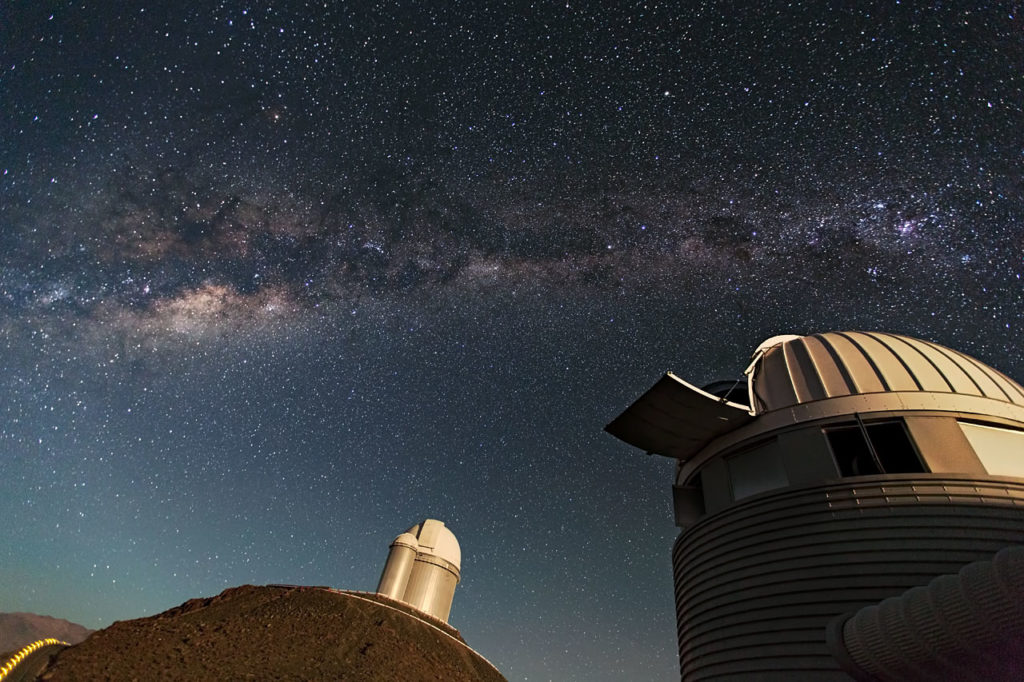A new treasure trove of planets, ranging from worlds with small masses and short orbital periods of less than 15 days to super-Earth-sized planets that can take up to a year to orbit their star, has been discovered by astronomers using the world’s most successful ground-based planet-finding instrument.
The 20 new worlds have been found around eight bright, Sun-like stars by the HARPS (High Accuracy Radial velocity Planet Searcher) Echelle Spectograph instrument, mounted on the 3.6m telescope at the European Southern Observatory in Chile. HARPS, which has discovered around 200 planets since 2003, is are able to measure the velocity of a star’s wobble incurred by the gravity of orbiting planets with the extreme precision of 1 m/s.

Xavier Dumusque, from the University of Geneva, is part of the consortium that built the HARPS instrument back in 2003 and is a member of the research team who discovered the 20 new planets.
“It’s important that we examine the data carefully and make sure we do all the tests we can to make sure we announce bonafide planets and not spurious signals. Because both the planets and the star induce signals, there has been quite a few planets announced which have turned out to be to be false-positives.” says Dumusque.
One of the systems observed was a binary system containing the stars HD 20781 and HD 20782. Although planets have been found in binary systems before, it is still uncertain how disruptive the gravitational tides from two stars can be to planet formation, or whether there could be long-term interactions between the two stars and their planets which make them unstable.
This system, however, is packed with planets. Orbiting around the star HD 201781 are two super-Earths with orbits of 5.3 and 13.9 days and two Neptune-mass planets with orbits of 29 and 86 days. The brighter star of the two, HD 20782, also has a Jupiter-sized world in an eccentric 595-day orbit.
Jason Dittman an astronomer at Harvard University was excited by the planets in the study and, in particular, this binary system. “These planets are really interesting because they have these longer orbital periods, and they complement the planets from transit surveys like Kepler. If we want a complete picture of what sort of planets exist in the universe, then discoveries like these are vital to the story,” he says.
At this moment there’s not much known about the eccentric Jupiter-like planet orbiting HD201782, except its minimum mass, its orbital period, and its eccentricity.
However, it is these highly eccentric planets that are interesting because we don’t see any like them in our own Solar System, and their existence implies that something strange has happened in their history.
It’s believed that the disks these highly eccentric planets form in are circular; meaning a star or another planet is responsible for getting them into such a highly eccentric orbit.
Dittman said, “I’d be curious to see if someone does some modelling to see if it’s possible that HD 20781 or its planets could have perturbed HD 20782’s planet to higher eccentricities.”
Another star studied was HD 20003, which was found to harbour two Neptune-mass planets with eccentric orbits of 11.9 and 33.9 days, close enough that they gravitationally interact with each other. It is possible that in the past, the two planets were in resonance, which might have increased the eccentricity of the innermost planet until a specific event, such as the presence of additional planet, made the two planets go slightly out of resonance on their current orbit.
“We saw 20 more planets orbiting bright and therefore close by stars. Thus the probability of having at least one planet around each star increases. Today, the statistics show at least 50% of stars similar to the Sun have planets.” Dumusque said.
Dittman believes that HARPS and other radial velocity surveys in general don’t get enough credit for the amount of time and dedication that goes into their observations.“Detecting planets with periods that are several years long takes a long time to do because you want to see the planet go around the star a couple of times.”
He continued, “The dedication and forward-thinking to get data on a star for many years is amazing. It’s great to see these long-running radial velocity programs continue to hit pay-dirt and find some longer period, eccentric systems with which to test our theories.”
The other systems observed were: HD 21693, a system with two Neptune-mass planets close to a 5:2 resonance; HD 31527, a three-Neptune system lying in the habitable zone; HD 45184, a system with two close-in Neptunes; HD 51608 harbouring two Neptune-mass planets; HD 134060, a system with a short-period Neptune on an eccentric orbit with a more massive long-period companion; and HD 136352, a system which has three planets in orbit.
